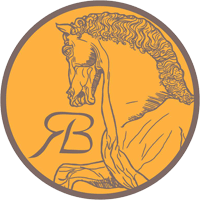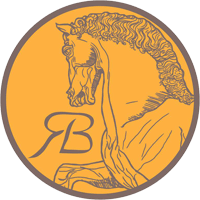Training With Your New Partner
Now that you have found your ideal horse it’s time maintain its value and quality of life by correct training. If you are one of the lucky people that can afford an older well trained horse than your job is to learn from this horse as much as you can, but you must realize and accept that while you are learning the quality of your horse may decrease. That is alright, as long as you are developing a better understanding of your individual riding skills, and taking good care of your new partner. However, it would help your learning process tremendously if you had a good trainer/coach that could regularly ‘tune up’ you and your horse. If you are like most of us and can only afford a nice younger horse, then you will likely need assistance in training your new prospect. Even if you cannot afford daily help it is crucial that you have weekly or monthly lessons to ensure that you are on the right track. As we all know, but sometimes don’t realize, if we start going down the wrong road, it takes twice as long to get back to where we originally started.
First, you must approach your horse not only as your companion or your teammate, but your student. You must never forget that when you are in the saddle you are a trainer, whether you want to be or not, your horse learns from your daily conditioning, or lack there of. So, your first job is to stop thinking like a rational human being and to start thinking like a horse. Horses have the brain capacity of a two year-old child, some more, some less; they do not process feelings and emotions as we do, so we must above all else be patient. You must also understand that your horses training either improves or gets worse, it does not stay the same. It is impossible for them to remain the same, they learn, they improve in muscling or in a physical manner, or they loose momentum in their training and take steps backwards. As we all have unfortunately discovered they fall backwards much faster than they improve. Once you have started your journey of training your young horse you will find it to be challenging, puzzling, and sometimes frustrating, but ultimately rewarding.
There are many common issues with young horses. They are often ‘one sided’ as we are right and left handed. They frequently have steering issues, work ethic problems; in general they are a clean slate and don’t understand anything. So, I think it’s imperative to develop a strong line of communication with your young horse first from the ground. Simply that they learn to walk, trot, and canter, when you ask. I always line drive my young horses after I have lunged them consistently for about two to four weeks depending on how hot and sensitive they are.
After they have an understanding of steering I introduce the rider and put them back on the familiar lunge line, synchronizing voice commands with the rider’s aids, so they easily develop a solid foundation and basic training. At this point it is crucial that they learn to trust and respect the rider and accept their new work load. In dressage we must then begin to follow our classical training scale which first emphasizes the horse’s rhythm (which encompasses relaxation), then suppleness (elasticity), contact (developing of the connection for the hind leg to the bit, also known as being ‘on the bit’), impulsion, straightness, then ultimately collection. Once you have had enough time and conditioning to develop an acceptance of the rider’s aids and bit, you must first concentrate on the rhythm (which is the first prerequisite of a good dressage horse).
First, I let my horses find their balance on their own, without any assistance from the rider. At this point it is best if the rider is simply weight on the horses back, not influencing the horse in any way other than asking for the horse to trot and canter (steering is not a huge issue at this point, steer them, but try not to force or influence them to turn sharply or too tightly relative to their natural balance), let them find their own way. Once you have established a daily routine that has regularly accomplished your desired rhythm and relaxation, then you must address suppleness, which translates into balance.
An excellent way to now improve the horse’s natural rhythm and balance is with cavallettis. Set ideally 5 cavalletti’s out about two large steps, or 4-6 feet apart depending on the length of your horses trot stride, first on a simple straight line (but later on you can put them on a circle, fanning to a much larger, lengthening of the stride). If your horse is unsure set one aside initially, then ask him to go over all five. Most horses adjust themselves accordingly and even start to stretch down into the bit, raising and suppling their backs, without much persuasion from the rider. Next you can trot into the cavalletti’s and canter directly afterward to help improve the promptness of the canter depart (this works because it helps not only to improve their balance, but helps to extract the momentum, or speed, which creates raw impulsion). Once this exercise flows with ease, then you no longer have a green untrained horse, congratulations, you’ve survived.
Remember, sometimes the best horses are initially tough to start. Be patient, give them time to develop, one day they may surprise you!
First, you must approach your horse not only as your companion or your teammate, but your student. You must never forget that when you are in the saddle you are a trainer, whether you want to be or not, your horse learns from your daily conditioning, or lack there of. So, your first job is to stop thinking like a rational human being and to start thinking like a horse. Horses have the brain capacity of a two year-old child, some more, some less; they do not process feelings and emotions as we do, so we must above all else be patient. You must also understand that your horses training either improves or gets worse, it does not stay the same. It is impossible for them to remain the same, they learn, they improve in muscling or in a physical manner, or they loose momentum in their training and take steps backwards. As we all have unfortunately discovered they fall backwards much faster than they improve. Once you have started your journey of training your young horse you will find it to be challenging, puzzling, and sometimes frustrating, but ultimately rewarding.
There are many common issues with young horses. They are often ‘one sided’ as we are right and left handed. They frequently have steering issues, work ethic problems; in general they are a clean slate and don’t understand anything. So, I think it’s imperative to develop a strong line of communication with your young horse first from the ground. Simply that they learn to walk, trot, and canter, when you ask. I always line drive my young horses after I have lunged them consistently for about two to four weeks depending on how hot and sensitive they are.
After they have an understanding of steering I introduce the rider and put them back on the familiar lunge line, synchronizing voice commands with the rider’s aids, so they easily develop a solid foundation and basic training. At this point it is crucial that they learn to trust and respect the rider and accept their new work load. In dressage we must then begin to follow our classical training scale which first emphasizes the horse’s rhythm (which encompasses relaxation), then suppleness (elasticity), contact (developing of the connection for the hind leg to the bit, also known as being ‘on the bit’), impulsion, straightness, then ultimately collection. Once you have had enough time and conditioning to develop an acceptance of the rider’s aids and bit, you must first concentrate on the rhythm (which is the first prerequisite of a good dressage horse).
First, I let my horses find their balance on their own, without any assistance from the rider. At this point it is best if the rider is simply weight on the horses back, not influencing the horse in any way other than asking for the horse to trot and canter (steering is not a huge issue at this point, steer them, but try not to force or influence them to turn sharply or too tightly relative to their natural balance), let them find their own way. Once you have established a daily routine that has regularly accomplished your desired rhythm and relaxation, then you must address suppleness, which translates into balance.
An excellent way to now improve the horse’s natural rhythm and balance is with cavallettis. Set ideally 5 cavalletti’s out about two large steps, or 4-6 feet apart depending on the length of your horses trot stride, first on a simple straight line (but later on you can put them on a circle, fanning to a much larger, lengthening of the stride). If your horse is unsure set one aside initially, then ask him to go over all five. Most horses adjust themselves accordingly and even start to stretch down into the bit, raising and suppling their backs, without much persuasion from the rider. Next you can trot into the cavalletti’s and canter directly afterward to help improve the promptness of the canter depart (this works because it helps not only to improve their balance, but helps to extract the momentum, or speed, which creates raw impulsion). Once this exercise flows with ease, then you no longer have a green untrained horse, congratulations, you’ve survived.
Remember, sometimes the best horses are initially tough to start. Be patient, give them time to develop, one day they may surprise you!
© 2024
Rigdon & Blake Stables | All Rights Reserved

